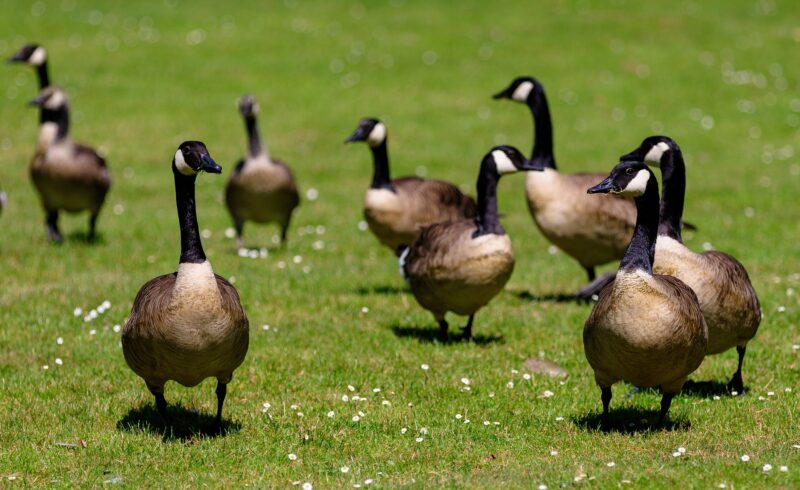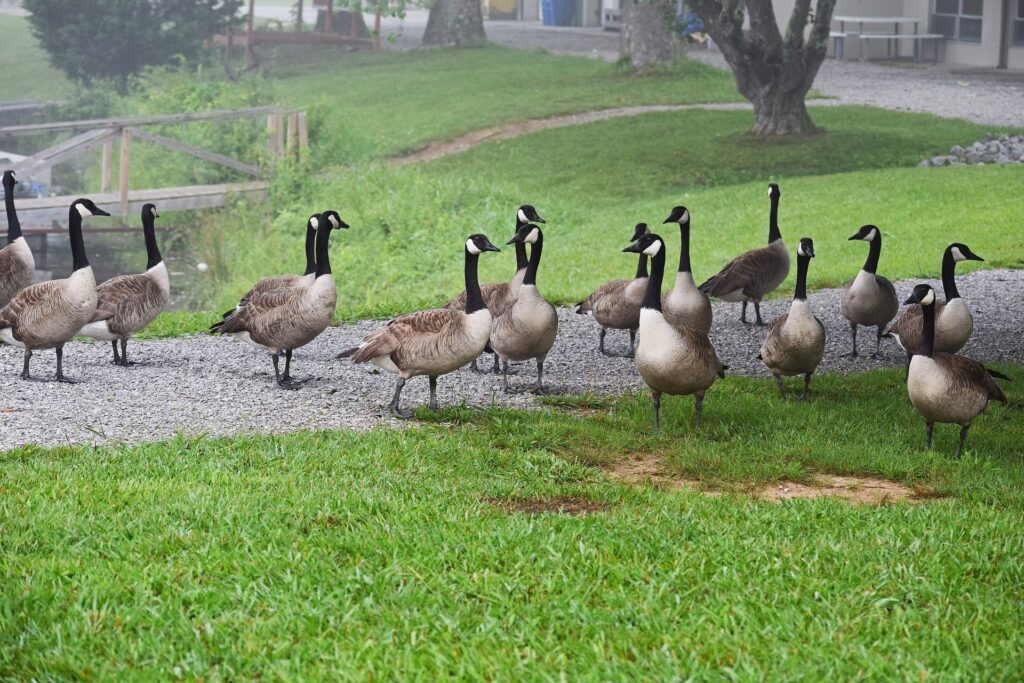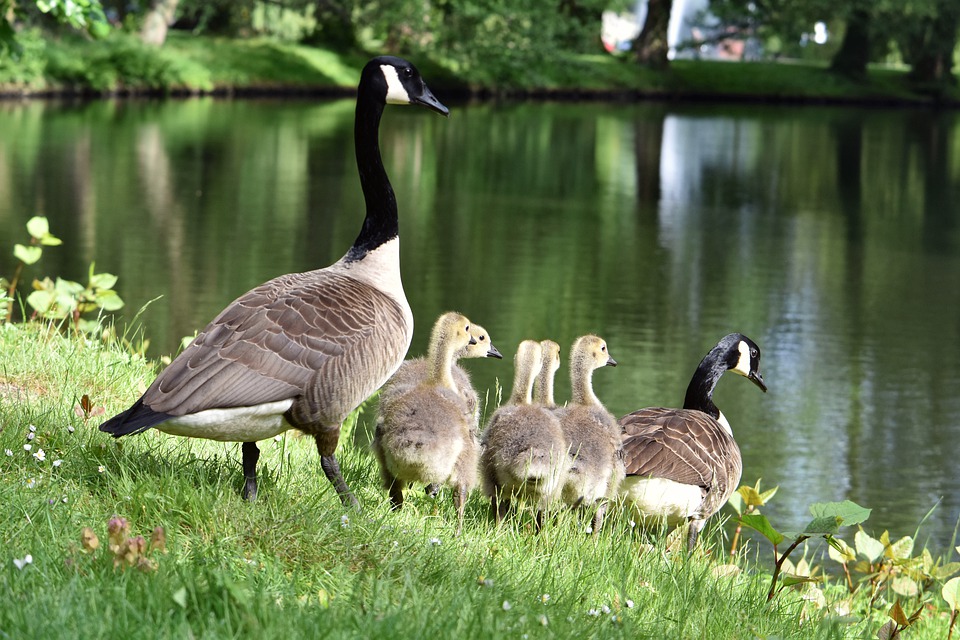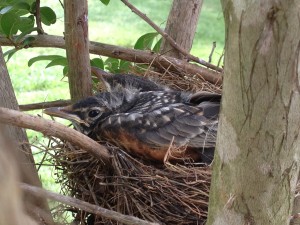
Canada geese are one of the best-known types of water birds. Their long black necks with black and white markings on their heads make them easy to recognize, even from far away.
But although many geese still live in wilderness areas, others have moved into the cities. They take up residence in neighborhoods, parks, and even golf courses. The manicured lawns provide them with plenty of grass to eat. Also, without all the trees, shrubs, and other vegetation around, the geese have a clear view to watch for predators. It’s no wonder that the ponds on golf courses are so inviting!
Don’t They All Fly South?
 Many people are familiar with the V-formation that geese make as they migrate south in the fall and north in the spring. And although it’s true that geese in extremely cold areas will migrate long distances, many geese in southern Canada and the United States travel only a short way if they migrate at all. Those with enough food resources and open water often stay in the same location throughout the year. You’ll still see them long after winter’s chill has set in.
Many people are familiar with the V-formation that geese make as they migrate south in the fall and north in the spring. And although it’s true that geese in extremely cold areas will migrate long distances, many geese in southern Canada and the United States travel only a short way if they migrate at all. Those with enough food resources and open water often stay in the same location throughout the year. You’ll still see them long after winter’s chill has set in.
How Do They Behave?
If you have Canada geese living nearby, you may be wondering what your new neighbors are like. They are family-focused, with males and females mating for life and staying together throughout the year. In the spring, a pair will break out from the flock to choose its territory. The female selects the nesting site, builds the nest, and sits on the eggs as the male guards nearby. After the goslings hatch, they stay with their parents, often for the entire first year. The family feeds, sleeps, and travels together.
Are they Dangerous?
 If a male goose feels as if its mate, eggs, or goslings are threatened, it may attack. When a potential predator gets too close, the goose may give a warning call, then try to chase the intruder away. If the person does not leave quickly enough, the goose may become aggressive and bite the person or hit them with its wings.
If a male goose feels as if its mate, eggs, or goslings are threatened, it may attack. When a potential predator gets too close, the goose may give a warning call, then try to chase the intruder away. If the person does not leave quickly enough, the goose may become aggressive and bite the person or hit them with its wings.
There are things you can do if a goose attacks. Geese have excellent vision, and they watch the eyes and body language of people who may be a threat. Therefore, it’s important to keep eye contact with the goose and face your body directly towards the bird. Never squint or close your eyes, and do not turn around. Don’t kick, hit, or act aggressively, as this will just agitate the goose more. Instead, just back away slowly until you can leave the area safely. And be sure to steer clear of their droppings.
Find Out More!
Want to find out more about Canada geese? Check out these great sites:
“Canada Goose” – Audubon.org
“Canada Goose” – The Cornell Lab










